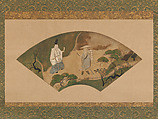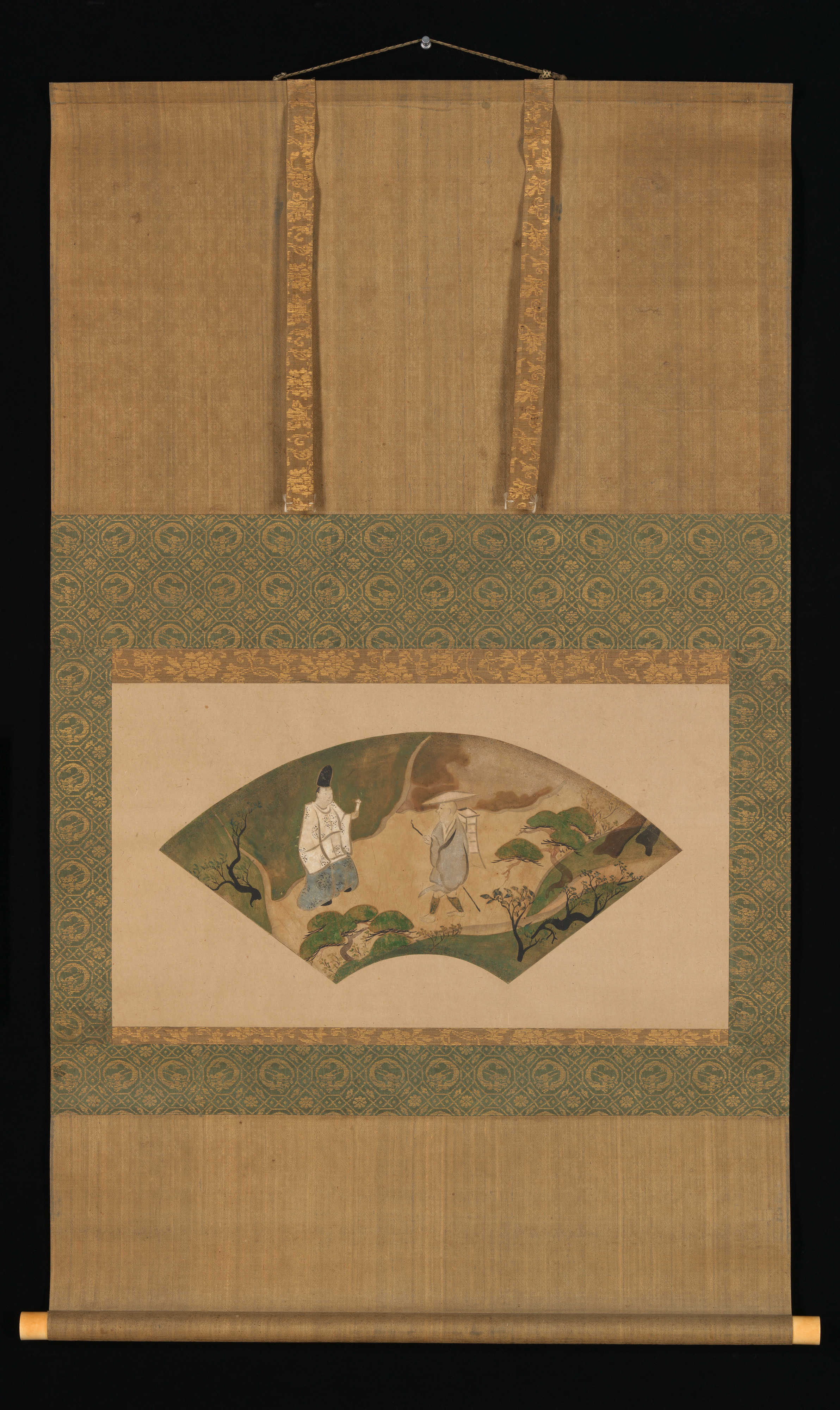Scene from the Tales of Ise: “Mount Utsu”
Fukae Roshū Japanese
Not on view
This scene is inspired by the “Mount Utsu” (literally, “Mountain of Sadness”) episode of The Ise Stories (Ise monogatari), a tenth-century narrative recounting the travels and travails of an unnamed protagonist, whose fictional persona is based on the courtier-poet Ariwara no Narihira (825–880). Rinpa artists often reduced the entire scene, also popularly known as the “Ivy Path” (Tsuta no hosomichi) episode, to an image of an ivy-covered mountain path.
The scene shows the courtier and his attendant traveling in the foothills of Mount Utsu. In accordance with the story, on a path overgrown with ivy and maple trees, the pair comes upon a religious ascetic, whom the courtier asks to transmit a poem back to his former lover in the capital. In the poem, the courtier bemoans the fact that he can no longer see his love, not even in his dreams, in which, according to ancient beliefs, lovers are able to meet.
Fukae Roshǔ was active in the early eighteenth century, but his small surviving corpus shows that he worked in an archaic Sŏtatsu mode.
Due to rights restrictions, this image cannot be enlarged, viewed at full screen, or downloaded.
This artwork is meant to be viewed from right to left. Scroll left to view more.



